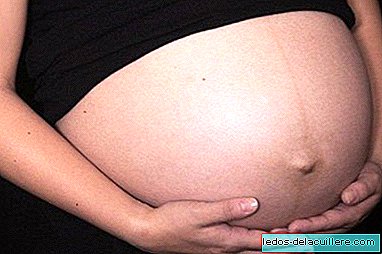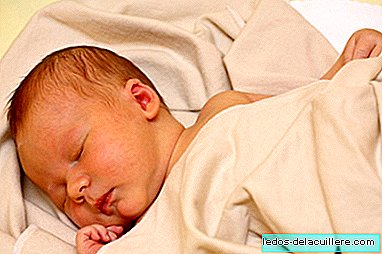
We usually talk about contractions to refer to labor contractions, but there are several types of contractions, whose function and characteristics vary throughout pregnancy.
But before talking about the contractions in pregnancy, we have to know the body responsible for their occurrence: The uterus. It is a smooth muscle capable of contracting and exerting enough pressure to expel the baby at the time of delivery. It has, like all tissues formed by muscle fibers, a contraction phase and a relaxation phase.
But the uterus does not begin to function at the time of delivery, but is exercised throughout the nine months of pregnancy. The function of the contractions is to facilitate the circulation of blood through the placenta and uterine muscle, and keep the uterus in good shape and capacity for when the delivery arrives. Towards the end of pregnancy, they help clear the cervix and the baby is placed in the birth canal.
Next we will know the contraction characteristics, the types of contractions and in a next post we will talk about something that worries many pregnant women: how to differentiate false contractions from labor contractions.
Characteristics of uterine contractions
To understand the different types of contractions It is interesting to know first what are the characteristics of uterine contractions. That will help us to recognize them better at the time they occur.
According to their physiology, uterine contractions can be seen:
• Tone: the lowest pressure recorded between contractions • Intensity (amplitude): increased intrauterine pressure at each contraction. It is measured in mmHg. The contractions are perceived approximately from 10 mmHg and those between 25-30mmHg of intensity border on the limits of painful sensitivity.
Degrees of intensity:
0: less than 15mmHg +: 15 to 25mmHg, generally lasts less than 30 seconds ++: 30 to 50mmHg and lasts approx. 45 seconds +++: more than 50mmHg and lasts more than 60 seconds
• Frequency: number of contractions produced in 10 min • Interval: the time between the vertices of two contractions • Uterine activity: intensity x frequency, expressed in mmHg x 10 minutes
Types of contractions
Contractions A (or Alvarez): They occur in the initial stages and up to 28 weeks. They are of very low intensity (2-4 mmHg) and of low frequency. They are never perceived by the pregnant woman.
Focal contractions: They are contractions of low intensity (less than 10mmHg) located in small areas of the uterus. They usually occur as a reaction to a movement of the baby.
Generalized contractions: begin in one area but extend to the rest of the uterus. They can be produced by movements of the baby or by efforts or changes of position of the mother.
Braxton Kicks contractions: have an intensity of between 10-15 mmHg. They spread in a larger area of the uterus, the gut hardens but there is no pain. They last approximately 30 to 60 seconds. Their frequency is low (1 / hour), but they increase as pregnancy develops. They may appear from week 13 but it is normal to begin to notice towards the second half of pregnancy. They are irregular, arrhythmic and painless contractions.
Prepaid contractions: They are more intense contractions than those of Braxton Hicks but they are not those of labor itself. They may appear a few days before delivery and indicate that the time is coming. Its function is to mature and soften the cervix. They are more frequent and can cause some discomfort. Their intensity is 20 mmHg although they can reach 30 mmHg every 5-10 minutes but they are not rhythmic.
Labor contractions: they are regular, progressive and intense. Regular periods occur with a frequency of 3 to 5 contractions every 10 minutes. They increase in duration, lasting approximately between 60 and 90 seconds. And they are painful, their intensity is greater than 30mmHg and in the expulsive they can reach 60mmHg.
Knowing the different better types of contractions that happen in pregnancy will be easier to recognize when they occur. In another post we will talk specifically about how to differentiate false contractions from true labor contractions.












